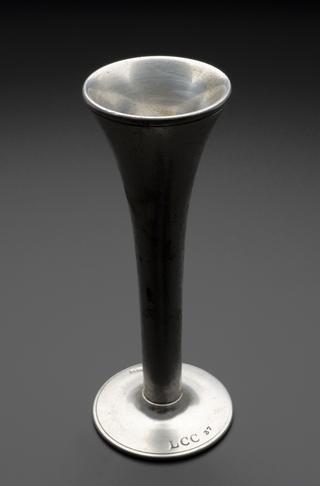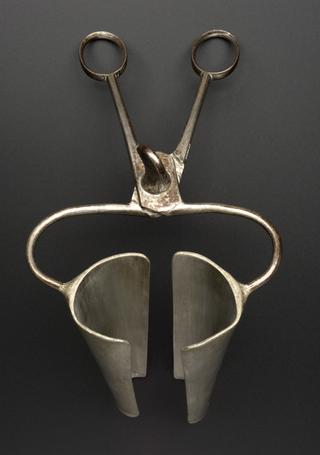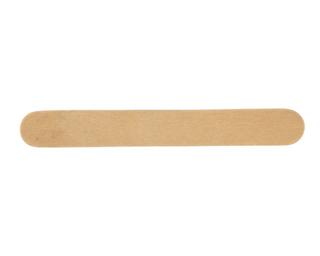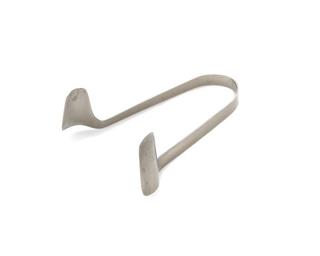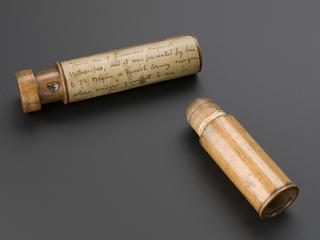
Two Aitken-type thermometers, London, England, 1871-1905
- maker:
- Casella, L. P.
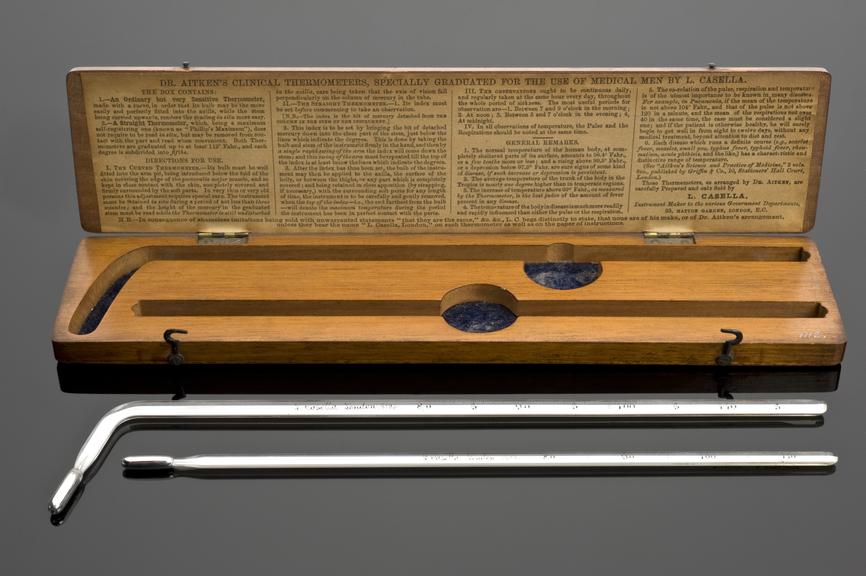
Two thermometers, one straight & one bent, marked in Fahrenheit scale, Aitken type, glass, in wooden case, by L. Casella of London, 1865-1871
British physician Sir William Aitken (1825-1898) designed these two thermometers. The bent one can be removed from the patient and still be read up to three minutes later. This is because a constriction above the mercury bulb prevents the mercury dropping back after the temperature has been taken. The straight thermometer must be read in situ.
The clinical thermometer differs from an ordinary thermometer. It measures only over a limited temperature range relating to body temperatures. Such instruments were used in medicine for some time before 1850. However, it was only then they began being used as precise means to diagnose disease. They were also used to predict a disease’s course through recognising the different temperature patterns of specific diseases.
Details
- Category:
- Clinical Diagnosis
- Collection:
- Sir Henry Wellcome's Museum Collection
- Object Number:
- A606091
- Materials:
- wood, glass, mercury, mahogany (wood), paper (fibre product), brass (copper, zinc alloy), metal (unknown) and felt
- Measurements:
-
overall: 20 mm x 305 mm x 69 mm, 23kg
overall (closed): 21 mm x 304 mm x 70 mm, 0.226 kg
overall (open): 18 mm x 304 mm x 142 mm, 0.226 kg
- type:
- thermometer
- credit:
- Spink
